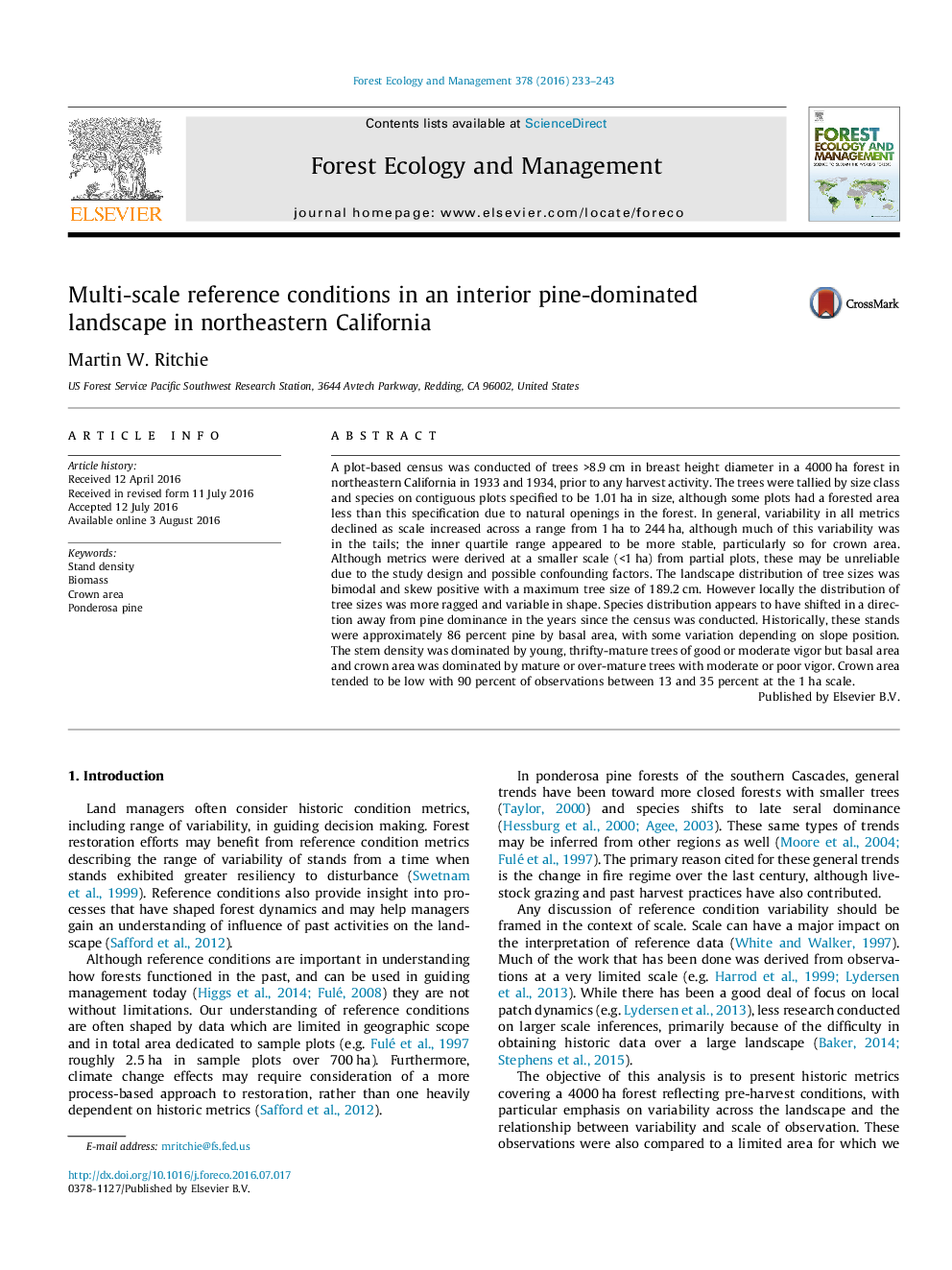| Article ID | Journal | Published Year | Pages | File Type |
|---|---|---|---|---|
| 6542054 | Forest Ecology and Management | 2016 | 11 Pages |
Abstract
A plot-based census was conducted of trees >8.9Â cm in breast height diameter in a 4000Â ha forest in northeastern California in 1933 and 1934, prior to any harvest activity. The trees were tallied by size class and species on contiguous plots specified to be 1.01Â ha in size, although some plots had a forested area less than this specification due to natural openings in the forest. In general, variability in all metrics declined as scale increased across a range from 1Â ha to 244Â ha, although much of this variability was in the tails; the inner quartile range appeared to be more stable, particularly so for crown area. Although metrics were derived at a smaller scale (<1Â ha) from partial plots, these may be unreliable due to the study design and possible confounding factors. The landscape distribution of tree sizes was bimodal and skew positive with a maximum tree size of 189.2Â cm. However locally the distribution of tree sizes was more ragged and variable in shape. Species distribution appears to have shifted in a direction away from pine dominance in the years since the census was conducted. Historically, these stands were approximately 86 percent pine by basal area, with some variation depending on slope position. The stem density was dominated by young, thrifty-mature trees of good or moderate vigor but basal area and crown area was dominated by mature or over-mature trees with moderate or poor vigor. Crown area tended to be low with 90 percent of observations between 13 and 35 percent at the 1Â ha scale.
Related Topics
Life Sciences
Agricultural and Biological Sciences
Ecology, Evolution, Behavior and Systematics
Authors
Martin W. Ritchie,
